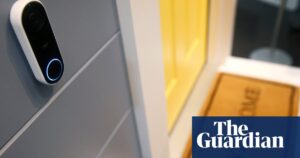
Unlock the Editor’s Digest for free
Roula Khalaf, Editor of the FT, selects her favourite stories in this weekly newsletter.
Three major investors are pushing FTSE 100 company Smith & Nephew to consider a break-up of the business, after disappointing results last month reignited concerns about the medical device maker’s strategy.
The top 20 shareholders told the Financial Times that the UK-headquartered company should spin off its orthopaedics division, which makes replacement hip and knee joints, if management could not improve its performance.
Two of the investors said that a private equity firm could be a potential buyer for the division, the largest by sales of the company’s three business lines. “If they could find a buyer for the orthopaedic business that would be quite compelling,” one of the investors said.
Shares in Smith & Nephew have fallen more than 13 per cent since the end of October when it cut its growth forecast for the year, citing poor sales in China linked to changes in the country’s procurement policies. It also said it would continue to struggle in 2025.
But China accounted for just 5 per cent of sales last year according to its annual report, and investors said the challenges were more widespread, including a loss of market share in the US, where it makes the majority of its sales.
Rupert Soames, chair of Smith & Nephew, told the Financial Times: “We have a well-formed strategy and a plan that we are diligently executing . . . it encompasses all three of our business lines.”
Swedish activist Cevian took a 5 per cent stake in the company earlier this year, saying it “owns fundamentally attractive businesses”, but had failed to create shareholder value.
Its shares are down more than 40 per cent over the past five years as it has struggled with high turnover of executives and underperformance in its orthopaedics division.
Orthopaedics is the company’s largest but slowest-growing division, behind wound management and sports medicine. Growth has been particularly slow in the US, where it has steadily lost market share over the past decade and is now the fourth-largest provider of replacement hips and knees.
Figures from the American Joint Replacement Registry show that the company’s Genesis product has gone from being used for 10 per cent of knee replacements in 2012 to under 5 per cent in 2023, falling behind the other three major providers, Zimmer BioMet, Stryker and Johnson & Johnson.
Deepak Nath, chief executive since April 2022, has launched a 12-point plan to improve performance into 2025, including strengthening its supply chain and launching new orthopaedics technology to win back market share.
But two of the investors said there was a lack of urgency to the turnaround efforts and that the board had not been open to alternatives, such as a spin off.
“The orthopaedics business is the problem child,” said one investor. “They are struggling to fix it and there may be a better owner to that asset if they can’t turn it around.”
“The fundamental risk for Smith & Nephew is that the orthopaedic business is the fourth-largest of an oligopoly of four . . . if they invest the same percentage of sales in research and development as the other three, the absolute investment is lower, and the others will pull ahead,” another added.
But one fund manager said he did not see the rationale for a break-up: “The orthopaedics business is capital intensive and relies on cash flow from sports medicine and advanced wound management to survive.”
Disappointing shareholder returns have led to attention from activist investors in the past: US firm Elliott Management mounted an activist campaign at Smith & Nephew in 2017, calling for it to break up the business.

